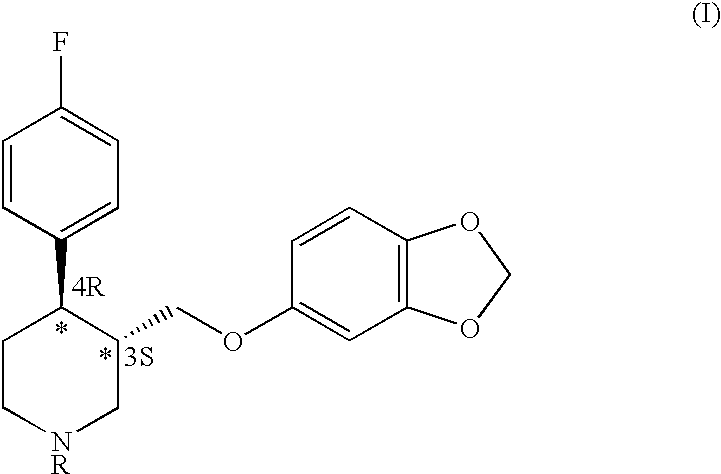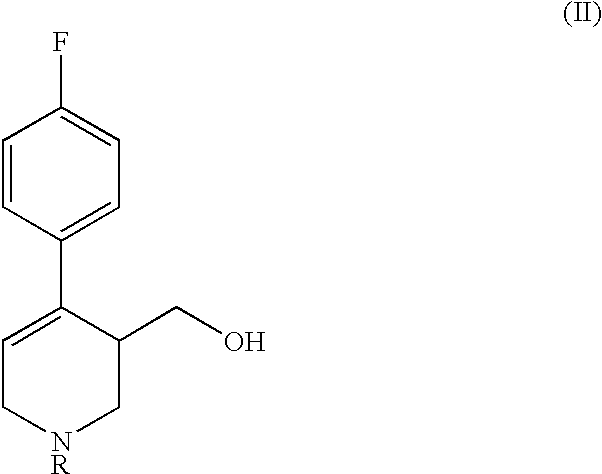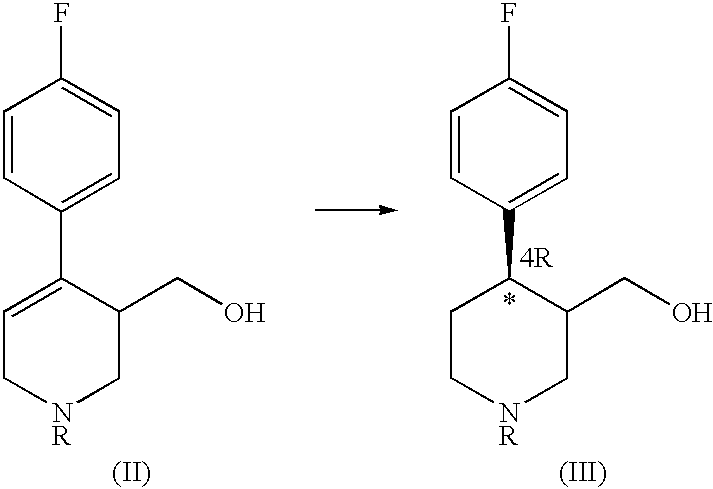Process for the production of paroxetine
a production process and paroxetine technology, applied in the field of paroxetine production process, can solve the problems of hardly scaling up to commercial size, inability to apply the process to commercial-scale production, and considerable loss of product in the form of undesired isomers
- Summary
- Abstract
- Description
- Claims
- Application Information
AI Technical Summary
Benefits of technology
Problems solved by technology
Method used
Image
Examples
example c
with different alcoholic or halogenated solvents, in order to check the solvent effect on the enantioselectivity. The hydrogenation temperature was 120.degree. C. and the reaction was discontinued after 5 hrs. The results are summarised in the following table.
As can be seen, all solvents afforded an ee of at least 95%. In the case of i-PrOH, in addition to an ee of 99%, a very high conversion rate (100% in 5 hrs) was observed.
H) Synthesis of 4R-cis- and 4R-trans4-(p-Fluorophenyl)-3-hydroxymethyl-1-ethyl-3-(3,4-methylenedioxyphenoxymethyl)piperidine (IV) [R=Et]
A 240 ml toluenic solution of the mixture of enantiomers (IIIa) and (IIIb) (40.0 g 169 mmol) obtained according to the preceding examples was mixed, at room temperature and under stirring, with triethylammine (1.7 equiv., 286 mmol, 21.0 ml), and subsequently with a solution of methansulphonyl chloride (1.2 equiv., 202 mmol, 15.6 ml) in toluene (40 ml) added dropwise over 1 hr.
The mixture was stirred at 25.degree. C. for 3 hrs a...
PUM
 Login to View More
Login to View More Abstract
Description
Claims
Application Information
 Login to View More
Login to View More - R&D
- Intellectual Property
- Life Sciences
- Materials
- Tech Scout
- Unparalleled Data Quality
- Higher Quality Content
- 60% Fewer Hallucinations
Browse by: Latest US Patents, China's latest patents, Technical Efficacy Thesaurus, Application Domain, Technology Topic, Popular Technical Reports.
© 2025 PatSnap. All rights reserved.Legal|Privacy policy|Modern Slavery Act Transparency Statement|Sitemap|About US| Contact US: help@patsnap.com



